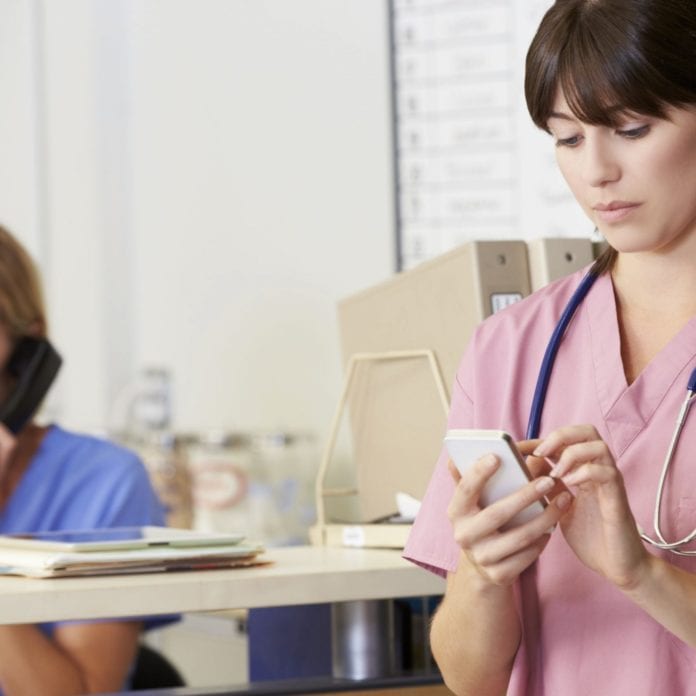Nextivity: Uninterrupted 4G coverage in public sector buildings in the U.K. cannot wait
As COVID-19 lingers on relentlessly, mobile telecoms and home broadband services are providing society with some semblance of normality. Everyday life involves homeworking on a level the world has never seen, socialising virtually via House Party, Zoom or similar is the new normal, videos are being streamed like they’re going out of fashion and phone conversations are, on average, 35% longer than they were before lockdown. As such, never has there been a greater need for reliable mobile coverage in any commercial, residential, or mixed-use building. This holds particularly true for public sector buildings such as hospitals or care homes.
Telecommunications declared a critical sector
Telecommunications has already been identified as a critical sector and there is an urgent requirement for uninterrupted voice and data coverage inside hospitals and care homes. It’s one of the core technologies underpinning safety-critical communications; it’s essential to first responder communications, to the quick mobilization of in the field teams and it’s continuously used by paramedics and other blue light services. 4G is also poised to replace the legacy safety critical communications network, Airwaves, as part a cross-party reform to update our emergency services network (ESN). Uninterrupted mobile coverage will therefore become fundamental to every aspect of safety critical communications inside buildings. Smartphones and tablets are also playing an important role on the wards right now by enabling patient to keep in contact with their families and loved ones now that visiting has all but stopped.
The role of mobile in healthcare
Numerous warehouse buildings and conference centres have been converted into emergency facilities in just a few weeks to aid national efforts to flatten the curve of the pandemic. In parallel, a number of supermarkets have set up pop up stores to serve NHS staff and other front-line workers and ubiquitous mobile coverage is central to their smooth running. In hospitals voice and data services facilitate swift admissions and a positive patient experience. Video calls are replacing real-world visitors and are helping patents overcome feelings of isolation. Even more importantly, a good communications network enables effective internal communications, thus permitting hospital doctors, nurses and clinicians to make sure that vital supplies and equipment are where they need to be.
Pop up facilities to support key workers
In pop-up facilities such as supermarkets or pharmacies, reliable mobile coverage allows in-store personnel to liaise with stockroom and distribution centre teams so that shelves can be replenished. A strong 4G signal also supports automated vending machine replenishments and cashier-less payments, thus minimizing staff levels. Most importantly, and a consideration conveniently forgotten, ubiquitous mobile coverage is a basic health and safety requirement in all warehouses and distribution centres, yet many have inadequate coverage because of their sheer magnitude and perceived high costs involved.
Wi-Fi not a viable option
While many of the repurposed buildings already have a preinstalled communications infrastructure, it’s more than likely been designed for very different purposes. Wi-Fi is often seen as the preferred option, but implementation can be complex and does not deliver the performance and quality required for voice calls and video calls can be jumpy. All public sector facilities need voice and data coverage now. The UKs different operators (MNOs) are already working together to meet surges in demand and there’s also provision for additional capacity, should the need arise. However additional capacity does not necessarily equate better coverage inside a large building because mobile phone signals are weaker by default inside any building because materials like metal, glass, iron and reinforced concrete hamper their penetration.
Hospital buildings are prone to having poor to non-existent 4G coverage due to the sheer number of internal corridors, clinics, wards, stairwells and basement areas, all of which are notorious mobile black spots. Many of the warehouse and exhibition halls also have limited mobile coverage because coverage is often restricted to offices, canteens or break out areas.
Taking the outside network indoors is not that complicated
The only way to overcome the mobile coverage problem is to take the outside signal indoors using supplementary signal boosting equipment. This has not always been plain sailing either because of long implementation times, cost and strict licensing laws about their usage. Fortunately, thanks to a relaxation in the mobile repeater rules by Ofcom, this is no longer the case. The caveat is that any installed equipment must satisfy the regulator’s mobile repeater license exemption spec and not many do. Cel-Fi by Nextivity is one option that does meet all requirements and is legal to use on all 3G and 4G networks.
Mobile connectivity has long been a key pillar of modern society, but in recent weeks we’ve seen its value more starkly than ever because of the assurance it offers in these uncertain times. It is crucial, therefore, that any facility being converted/repurposed/developed to support key workers in their battle against Coronavirus have unprecedented access to reliable indoor mobile coverage network, regardless of the provider or location.

